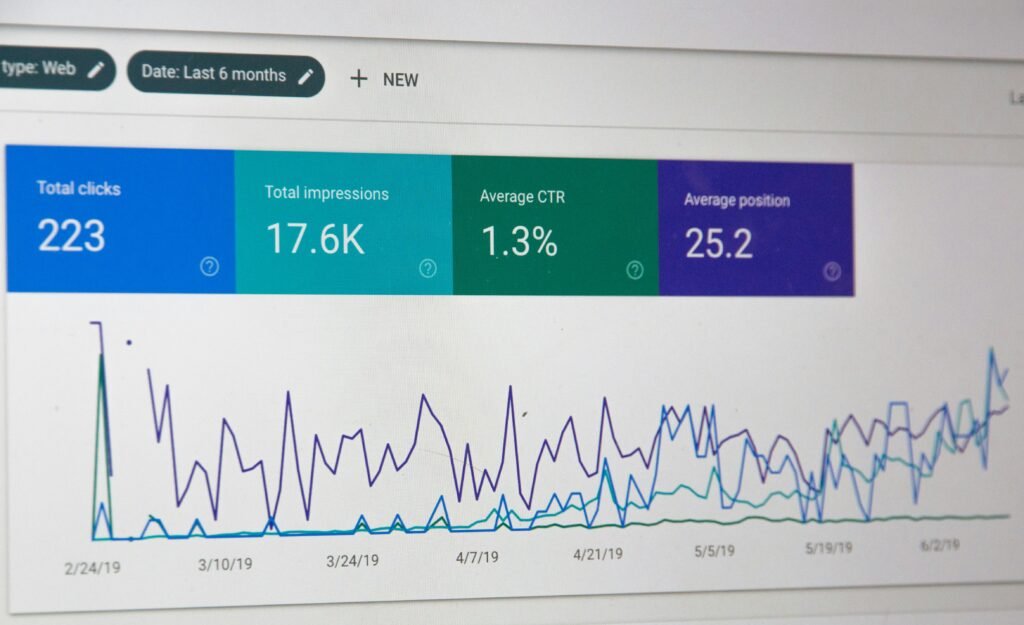
Introduction to Social Media Monetization
Social media monetization refers to the process through which individuals and organizations leverage social media platforms to generate income. As the digital landscape evolves, social media has transformed from a mere communication tool into a robust medium for revenue generation. Influencers, brands, and content creators exploit these platforms to not only engage audiences but also to implement various strategies to achieve financial gain. This evolution has reshaped traditional business models, allowing for new forms of commerce and marketing.
The significance of social media monetization lies in its ability to connect advertisers with target demographics in ways that were previously unattainable. Brands can reach specific audiences, harnessing the vast amounts of data available within social media networks to tailor their messaging and product offerings. These targeted advertising efforts have led to a more efficient distribution of marketing resources, ultimately enhancing return on investment (ROI) for businesses that utilize these platforms effectively.
Furthermore, content creators capitalize on their ability to curate unique content and engage with followers, often leading to partnerships with brands that wish to leverage their influence. This symbiotic relationship not only fosters creativity and innovation but also allows creators to earn through sponsorships, affiliate marketing, and direct product sales. As the trend of social media monetization grows, it underscores a significant shift in how businesses interact with consumers, fostering a more dynamic and interactive economy.
In understanding social media monetization, it is essential to acknowledge its impact on traditional business structures. The emergence of influencer marketing and social commerce reflects a movement towards personalized and authentic engagement, diverging from conventional marketing tactics. As organizations adapt to these changes, the incorporation of social media strategies in business plans becomes imperative for continued success in the competitive digital economy.
Understanding Different Social Media Platforms
In the ever-evolving landscape of social media monetization, it is essential to understand the distinct characteristics of major platforms such as Facebook, Instagram, TikTok, Twitter, and YouTube. Each platform offers unique monetization features and caters to different user demographics, making the choice of platform crucial for content creators seeking financial gain.
Facebook, with its vast user base, provides multiple avenues for monetization, including in-stream ads in video content, fan subscriptions, and branded content partnerships. The platform attracts a diverse demographic, which allows creators to reach a wide range of audiences. Content that performs exceptionally well on Facebook often includes engaging videos, live streams, and shareable articles that encourage community interaction.
Instagram, primarily a visual platform, specializes in visual storytelling. Creators can monetize through sponsored posts, affiliate marketing, and the Instagram Shopping feature. With a younger user base, primarily between the ages of 18-34, Instagram is ideal for fashion, beauty, and lifestyle content. High-quality images and videos, along with effective use of hashtags and stories, significantly enhance monetization possibilities.
TikTok has surged in popularity, particularly among Gen Z users. This platform focuses on short, entertaining videos that can go viral quickly. TikTok offers creators opportunities for brand partnerships through its Creator Fund, sponsored challenges, and affiliate marketing. The most engaging content on TikTok showcases trends, challenges, or relatable humor, making it essential for creators to be in tune with the current cultural zeitgeist.
Twitter, although not as visually centered, can be a lucrative platform for monetization through sponsored tweets, subscriptions, and brand collaborations. Engaging with real-time conversations, trending topics, and providing valuable insights are key strategies for maximizing reach and earning potential. Finally, YouTube remains a dominant force in video content, with monetization options ranging from ad revenue through the YouTube Partner Program to channel memberships and Super Chats. Creators producing tutorials, vlogs, or reviews typically find substantial success on this widely visited platform.
By analyzing these platforms and their respective monetization features, creators can effectively identify which aligns best with their unique content and audience, maximizing their potential earnings in the social media space.
Building an Engaged Audience
In the digital age, establishing and nurturing a loyal audience is pivotal for successful social media monetization. A thriving audience can significantly enhance a brand’s reach, engagement, and ultimately, profitability. To achieve this, content creation techniques must be employed thoughtfully. Crafting content that resonates with your target demographic is essential. This involves understanding their preferences and interests deeply. Utilize various formats, such as videos, infographics, and blog posts, to convey your message in diverse and captivating ways.
Engagement methods play a critical role in audience growth. Engaging with followers through comments, polls, and direct messages fosters a sense of community. Regular interaction demonstrates that the audience’s opinions are valued, thus strengthening their connection to your brand. Furthermore, leveraging live videos or Q&A sessions can enhance enthusiasm and encourage real-time interaction. This not only helps in retaining current followers but also attracts new ones through improved visibility within their networks.
The authenticity of your content cannot be overstated. Audiences tend to gravitate towards genuine narratives rather than overtly promotional messages. Therefore, embracing storytelling in your posts is a powerful strategy. Sharing personal experiences, challenges, and triumphs can make your brand relatable and trustworthy. Furthermore, utilizing user-generated content can amplify this authenticity by showcasing how your followers interact with your brand, creating a sense of belonging.
As you foster an engaged audience, it is important to remain adaptable and open to feedback. Being receptive to audience insights allows you to refine your approach and meet their evolving needs. By combining effective content creation techniques, consistent engagement, and authentic storytelling, you can ascertain a vibrant and loyal following. This audience will serve as a solid foundation for monetization efforts, ensuring your social media channels achieve their full potential.
Affiliate Marketing: Earning Through Recommendations
Affiliate marketing has emerged as a potent monetization strategy for individuals leveraging social media platforms. This approach involves promoting products or services through unique affiliate links, earning commissions from sales generated through these recommendations. To embark on a successful affiliate marketing journey, choosing the right affiliate programs is paramount. Select those that align with your niche and audience interests to ensure authentic engagement and higher conversion rates.
When considering affiliate programs, evaluate their commission structures, reputation, and product quality. Well-established networks such as Amazon Associates, ShareASale, and ClickBank offer a variety of products, enabling you to find suitable options. Additionally, focusing on products that you genuinely believe in can enhance your credibility among followers, leading to more effective marketing outcomes.
Once you’ve identified appropriate affiliate programs, tracking performance becomes crucial. Utilizing analytic tools provided by the affiliate networks can help monitor clicks, conversions, and commissions earned. Furthermore, social media insights can shed light on which content resonates with your audience, allowing you to refine your approach continually. Regularly analyzing this data can guide you in adjusting your strategies, thereby optimizing your earnings.
Incorporating affiliate links into your content requires a strategic approach. It’s essential to blend these links naturally within engaging posts to avoid coming off as overly promotional. Instead of simply sharing links, consider creating valuable content, such as product reviews, tutorials, or comparisons. For instance, a beauty influencer showcasing skincare products can provide a review that highlights their own experiences while cleverly embedding affiliate links. Case studies demonstrate that such authentic endorsements often lead to higher click-through and conversion rates.
By leveraging affiliate marketing effectively within the social media landscape, individuals can establish a reliable stream of income that aligns with their passion and expertise, providing genuine value to their audience.
Sponsored Content and Brand Collaborations
Sponsored content and brand collaborations have become integral components of social media monetization. Engaging with brands requires a strategic approach to ensure successful partnerships that provide mutual benefits. The initial step involves identifying brands that align with your audience and values. This alignment not only enhances authenticity but also increases the likelihood of successful engagement from followers.
Once you have identified potential brand partners, the next phase is to create a compelling pitch. The pitch should highlight your unique audience demographic, engagement rates, and prior collaboration successes if applicable. Demonstrating how the brand’s goals align with your content strategy can significantly increase the chances of securing a partnership. Consider using analytical tools to provide quantitative data that supports your proposal, as this adds credibility and showcases your impact.
Following a successful pitch, negotiating the contract terms becomes crucial. Ensure that you discuss creative control, payment structures, and deliverables in detail. Transparency is essential; clarify any expectations regarding deadlines, branding guidelines, and content formats. More often than not, brands seek innovative and engaging ways to present their products or services, and understanding their vision can lead to a fruitful collaboration.
Maintaining an authentic partnership is vital within the realm of sponsored content. Regular communication with the brand throughout the collaboration process helps to align expectations and resolve any potential issues swiftly. To uphold authenticity, it is advisable to integrate sponsored content seamlessly into your regular posts, ensuring the messaging resonates with your audience without disrupting their experience.
In conclusion, navigating sponsored content and brand collaborations requires strategic planning and effective communication to successfully monetize social media. Emphasizing authenticity and alignment with brand values will ultimately enhance credibility and foster meaningful partnerships.
Selling Products and Services Directly
With the evolution of social media platforms, selling products and services directly has become a viable income strategy for many entrepreneurs. Establishing an online shop on these platforms can provide a direct route to consumers, bypassing traditional retail barriers. To effectively set up shop, businesses can utilize features like Facebook Shops or Instagram Checkout, allowing users to browse products seamlessly without navigating away from the social media app.
Creating an effective sales funnel is critical to maximizing conversion rates. A well-defined sales funnel typically starts with awareness, where engaging content attracts potential customers. Following this, the consideration stage allows for informative posts demonstrating the product’s value. Finally, a clear call-to-action directs the audience to make a purchase. This structure guides users through the decision-making process, from initial exposure to final sale.
Leverage social media advertising to enhance visibility and drive more sales. Ads on platforms such as Facebook and Instagram enable precise targeting, reaching potential customers based on demographics, interests, and behavior. Allocating a budget for advertising can lead to exponential growth in audience reach and sales figures. A/B testing various ad formats and content can further fine-tune strategies, ensuring the advertisements resonate with the desired audience.
Engaging with customers is paramount in retaining their interest and loyalty. Responding to queries promptly and addressing concerns professionally can significantly enhance the customer experience. Moreover, providing post-sale support, such as follow-up messages or after-purchase care tips, can solidify a lasting relationship with consumers. Encouraging feedback through reviews or social media posts can also foster community engagement, fortifying brand loyalty. By applying these methods, businesses can effectively sell products and services through social media, turning casual followers into dedicated customers.
Utilizing Content Subscription Models
Content subscription models have emerged as a viable method for creators to monetize their social media activities. Platforms such as Patreon and YouTube offer distinct membership options that allow creators to provide exclusive, premium content to their followers in exchange for a subscription fee. This approach not only enhances the connection between creators and their audiences but also generates a steady revenue stream.
On platforms like Patreon, creators can offer varying subscription tiers, each with its own set of perks. For instance, lower tiers might include early access to content or behind-the-scenes updates, while higher tiers could grant access to exclusive videos, personalized interactions, and even one-on-one coaching sessions. This tiered approach not only encourages subscribers to invest at a higher level but also allows creators to cater to a diverse audience with different budgets and preferences.
YouTube’s membership options further exemplify this model by providing creators the opportunity to engage their audience through member-only live streams, badges, and custom emojis. By utilizing these features, creators can foster a sense of community among their subscribers while ensuring that their efforts remain financially rewarding.
When setting prices for subscription services, it is essential for creators to research their target audience and consider factors such as the perceived value of the content offered and the average market rate for similar subscriptions. Additionally, effective marketing strategies are crucial. Utilizing social media platforms to promote new subscription services and sharing testimonials or success stories can significantly enhance visibility and attract potential subscribers.
In conclusion, adopting content subscription models can empower creators to monetize their social media presence effectively. By offering exclusive content and implementing strategic pricing and marketing approaches, creators can establish a loyal subscriber base that supports their passion and sustains their creative endeavors.
Analyzing Analytics and Performance Metrics
In the realm of social media monetization, understanding analytics plays a crucial role in shaping effective strategies. Analytics refers to the systematic computational analysis of data, providing insights into user behavior, engagement levels, and the overall performance of content. To maximize earnings from social media platforms, it is imperative to make data-driven decisions that are informed by performance metrics.
One of the key components of analyzing social media analytics involves utilizing the insights provided by the platforms themselves. These insights often include statistics related to post engagement, reach, impressions, and audience demographics. By interpreting this data, users can identify which types of content resonate most with their audience. For instance, if a certain video format consistently garners higher engagement than other formats, it may warrant a shift in content strategy to focus more on video production.
Moreover, it is essential to measure the effectiveness of specific campaigns through key performance indicators (KPIs). Common KPIs to monitor include engagement rate, conversion rate, follower growth, and click-through rate. These metrics allow content creators to gauge the success of their monetization efforts and identify areas for improvement. For example, a declining engagement rate could indicate that the content is no longer aligning with audience interests, necessitating a reassessment of the content strategy.
Adapting approaches based on performance metrics is a continuous process. Social media algorithms frequently change, and user preferences evolve, thereby impacting the success of monetization strategies. By regularly examining analytics, content creators can remain agile, continuously refining their strategies to enhance performance and increase revenue. Ultimately, the ability to analyze and act on data not only empowers creators but also leads to sustainable monetization success in the dynamic landscape of social media.
Staying Compliant with Legal Regulations
When engaging in social media monetization, it is imperative to acknowledge the legal frameworks that govern online content creation and advertising. Different jurisdictions have established laws and guidelines that require content creators to disclose sponsored material. For instance, in the United States, the Federal Trade Commission (FTC) mandates that influencers or creators must clearly communicate when their posts are sponsored. This transparency not only helps maintain trust with the audience but also ensures compliance with the law, thereby mitigating the risk of potential penalties.
In addition to FTC regulations, many social media platforms have their own policies regarding monetization, sponsored content, and advertising. Creators must familiarize themselves with the rules set forth by the specific platform they utilize—whether it is Instagram, YouTube, or TikTok. Non-compliance can lead to account suspension, removal of content, or loss of monetization privileges. It is essential to regularly review platform policies, as they may change over time and often differ from one social media site to another.
Furthermore, creators must also protect their intellectual property rights and respect those of others. Using copyrighted material without permission can lead to legal disputes and financial repercussions. Licensing agreements should be sought whenever necessary, and content creators should ensure that any music, images, or videos included in their work are legally sourced. Additionally, understanding fair use policies can help avoid conflicts when incorporating third-party content.
To summarize, remaining compliant with legal regulations is a fundamental aspect of successful social media monetization. Creators should actively engage with disclosure requirements, platform-specific policies, and intellectual property law to secure their credibility and financial interests in this competitive digital marketplace.




